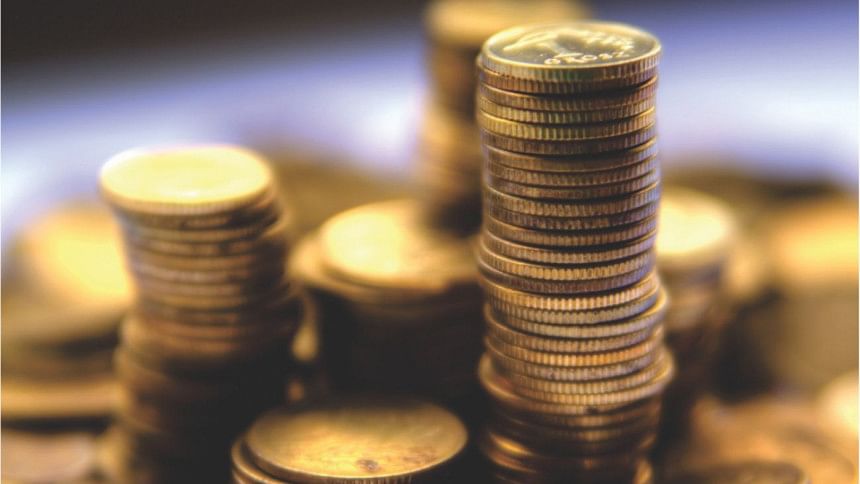SANCHAYAPATRA - A TROJAN HORSE

Martin Luther King once said, "Injustice anywhere is a threat to justice everywhere." A similar principle applies to the economy. A distortion in one market creates disturbances in other markets across borders. Outrageously high interest rates offered on the National Savings Certificates (NSCs), which we call Sanchayapatra, have long been distortive to deposit rates in commercial banks in Bangladesh. We are gradually turning into a risk avert, lazy saving society, dampening the spirit of private investments. A saving glut has been crippling the vigour of entrepreneurial venture. John Menard Keynes, who warned about this paradox, had said that saving is a vice.
The national saving rate of 30 percent, which is the ratio of savings to GDP, has already reached the investment rate, and the appetite for investment demand seems to be dull. We are gaining more fat than burning. In an emerging economy like Bangladesh, a savings rate lower than that of investment by even 10 percentage points is not surprising. Actually, it is normal. The ensuing saving-investment gap that also relates to fiscal and current account deficits can easily be financed through foreign funds with cheaper interest rates in the age of globalisation. Financing the budget deficit with a high-interest bearing and thus expensive Sanchayapatra is not only dampening investment appetite, but also resulting in big expenditure for the government's future budget in the name of interest payments on Sanchayapatra.
When the government sets an interest rate which is much higher than the central bank's, savings are likely to move from the banking sector to the government coffers, paralysing the effectiveness of monetary policy to a great extent. It is akin to a situation where the referee throws an additional soccer ball in a field when the players have been chasing one ball all the while. The resulting distortion, therefore, must be avoided by implementing policy consistency between fiscal and monetary bodies. Since the interest rate is a monetary instrument, the central bank should have full control in determining the upper and lower bounds of interest rates. Suffice it to say, we will hold the central bank responsible for any failure in monetary aspects. We cannot expect the driver to steer the motor vehicle safely and efficiently without letting the driver be in full possession of the steering wheel, accelerator, and brakes.
The recent sale of Sanchayapatra's has fulfilled almost 40 percent of its annual target only after a quarter in the current fiscal year, suggesting a saving bubble in the economy. Sanchayapatra's net sale was 3 times higher than the target in the last fiscal year. While the average deposit rate in the banking system is roughly 7 percent at present, NSC rates are as high as 11 to 12 percent. The additional 4 to 5 percent is attracting the saving bees aggressively towards Sanchayapatra. This kind of huge interest rate disparity in a single market is chaotic for the economy in many ways.
High interest rates on NSCs are preventing banks' deposit rate from falling and thus keeping lending rates considerably high. NSCs offered interest rates as high as 13 percent when inflation was close to 12 percent in 2011 and 2012, giving a real rate of return of 1 percent. Now inflation has cascaded down to as low as 6 percent, causing Sanchayapatra rates to roll down to 8 percent at best. That would also justify a 7 percent average deposit rate in the banking system. Otherwise, the disparity would gradually become distortive. It is snatching away potential deposits that would otherwise have ended up in the banking sector and thus would have further lowered interest rates, making investments more attractive than they are now.
Whereas Sanchayapatra was supposed to support the poor, widows, retirees, and the vulnerable, in reality it is feeding the need and greed of the rich. The rich are not interested in being engaged in the capital market. Why would they take unnecessary risks in the stock market if equivalent returns can be pocketed without hassle? A high interest rate regime cannot stimulate the stock market. The US reinvigoration of the stock market in the post-2008 period was made possible through a historically lowest interest rate regime.
Sanchayapatra – a supposed welfare instrument – is actually a Trojan horse that threatens the future of our development budget, and thus reduces growth potentials for the nation. The higher the sale of NSCs, the higher the future interest liability which will definitely eat up a bigger pie of our budget, reducing the share of the Annual Development Programme (ADP). The interest liability of Tk 33 thousand crore in the budget is more than one third of our ADP. And NSC interest payments hold a major share of it. The share will keep growing day by day and will gradually squeeze the growth of the development budget in the future. This Trojan horse will do more harm than good.
We should not view the critics of Sanchayapatra as a counterparty to welfare. There are better ways to ensure welfare for the poor, widows, and pensioners. Just like India has started the sale of pension funds, we can develop numerous pension products with longer maturity and thus enable the government to use the funds for long-term infrastructure buildup. In addition, we can avoid maturity mismatch already prevalent in the financing method related to Sanchayapatra. Thus, the issue of helping the elderly and women can better be addressed by devising a smarter pension plan without eroding the future of development financing. The Trojan horse must be checked in advance to prevent the nation from falling into monetary distortions and a future budgetary debacle.
The writer is chief economist of Bangladesh Bank.

 For all latest news, follow The Daily Star's Google News channel.
For all latest news, follow The Daily Star's Google News channel. 



Comments